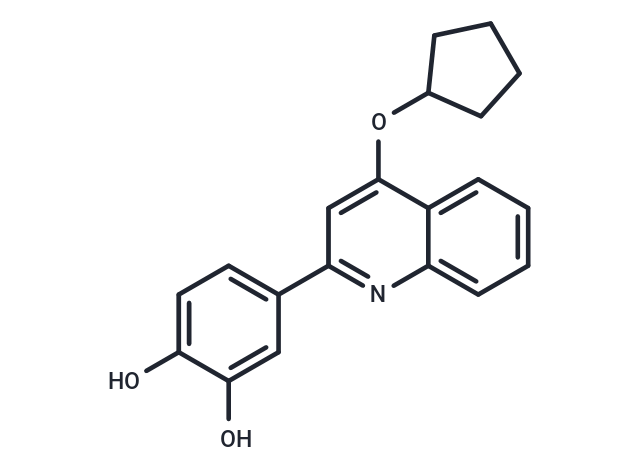Shopping Cart
- Remove All

Your shopping cart is currently empty


| Pack Size | Price | Availability | Quantity |
|---|---|---|---|
| 2 mg | $37 | In Stock | |
| 5 mg | $61 | In Stock | |
| 10 mg | $95 | In Stock | |
| 25 mg | $178 | In Stock | |
| 50 mg | $266 | In Stock | |
| 100 mg | $397 | In Stock | |
| 1 mL x 10 mM (in DMSO) | $68 | In Stock |
| Description | CMS-121, a quinolone derivative, is an orally active acetyl-CoA carboxylase 1 (ACC1) inhibitor. CMS-121 protects HT22 cells against ischemia and oxidative damage (EC50: 7 nM and 200 nM). CMS-121 shows strong neuroprotective, antioxidative, anti-inflammatory, and renoprotective activities. |
| In vitro | CMS-121 can increase acetyl-CoA in cells. CMS-121 (1 μM; 4 hours; HT22 cells) treatment also increases the phosphorylation of ACC1 at serine 79.[1]. |
| In vivo | CMS-121 preserves mitochondrial homeostasis by regulating acetyl-coenzyme A (acetyl-CoA) metabolism. CMS-121 (~20 mg/kg; p.o; daily; for 4 months; female SAMP8 mice) treatment decreases cognitive decline and metabolic and transcriptional markers of aging in the brain when administered to rapidly aging SAMP8 mice. [1]. |
| Alias | CMS121 |
| Molecular Weight | 321.37 |
| Formula | C20H19NO3 |
| Cas No. | 1353224-53-9 |
| Storage | Powder: -20°C for 3 years | In solvent: -80°C for 1 year | Shipping with blue ice. | |||||||||||||||||||||||||||||||||||
| Solubility Information | DMSO: 55 mg/mL (171.14 mM), Sonication is recommended. | |||||||||||||||||||||||||||||||||||
Solution Preparation Table | ||||||||||||||||||||||||||||||||||||
DMSO
| ||||||||||||||||||||||||||||||||||||

Copyright © 2015-2024 TargetMol Chemicals Inc. All Rights Reserved.